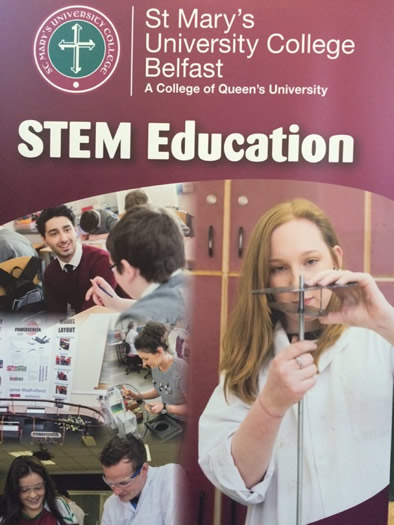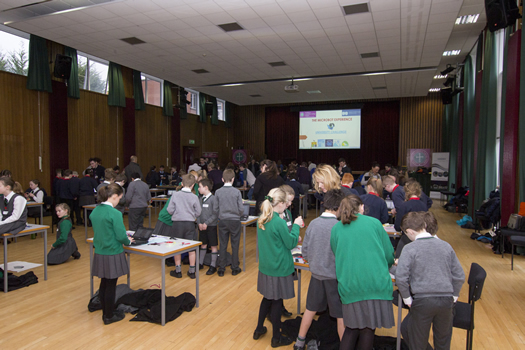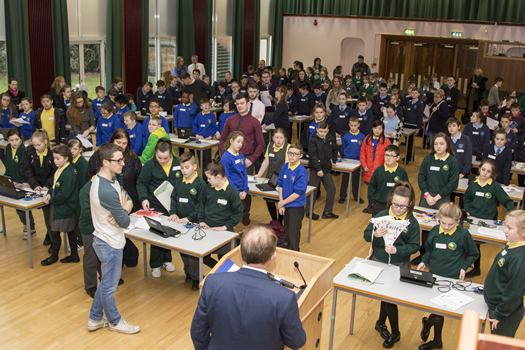|

“To kick-start the process of changing STEM's image, we have to start with the primary-school sector. In the primary-school curriculum, STEM subjects are practically non-existent.... These are the engineers of the future, yet, at this stage, there is no link with their academic careers. It is at this stage that we are losing children. It is essential that we broaden the perception of [STEM] at this early stage to ensure that the children recognise that these subjects form the backbone of any creative problem-solving solution in the world around us.” — Thomas Buchanan MLA, NI Assembly, 23 June 2015
On the 4th and 5th February 2016, 120 Primary 7 (P7) pupils and their teachers from Bunscoil Bheann Mhadagain, Hazelwood Primary, Holy Rosary Primary, Seaview Primary and Sullivan Upper Prep were invited to a “mini-university microbot experience” in St Mary's and Stranmillis University Colleges. The pupils worked in teams of four to programme microbots (small robots) to complete the following STEM-oriented, problem-solving activities:
- Navigate the perimeter of a 40 centimetre square
- Synchronize the microbots' flashing lights
- Enable the microbots to navigate a maze
- Programme two microbots for synchronized dancing to music.


The activities were judged to be extremely enjoyable by teachers and pupils alike. In addition to providing an insight into university life for pupils, a concurrent research study was undertaken to investigate if engagement in practical STEM problem-solving activities might enhance understanding of mathematical concepts involving space and time.
Prior to the two-day experience, the pupils completed a Trends in International Mathematics and Science Study (TIMSS) informed test and a learning preference questionnaire to determine the significance, if any, of pupils' learning preferences with respect to their engagement with STEM-oriented, problem-solving activities. A second TIMSS informed test was completed a week after the activity days, and an inter-college research team (comprising Dr Michael Ievers and Dr Brian Cummins from Stranmillis and Dr Katrina Mulholland and Mr Kieran McGeown from St Mary’s) will analyse the results. |



